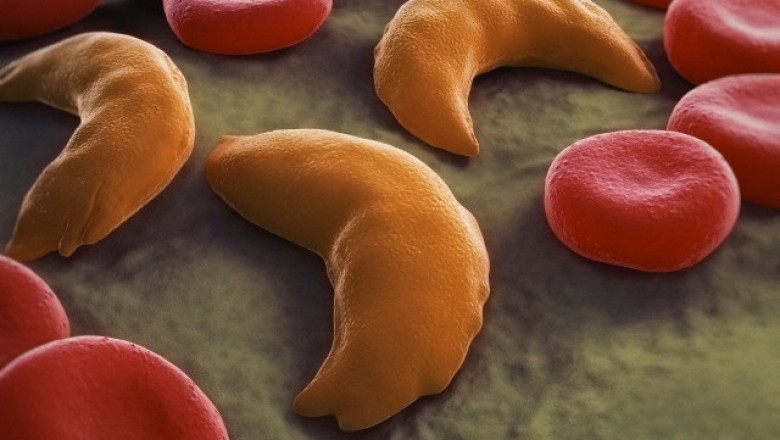views
What is Sickle Cell Disease?
Sickle cell disease is a group of inherited red blood cell disorders. It affects hemoglobin, the protein in red blood cells that carries oxygen. People with sickle cell disease have abnormal hemoglobin called hemoglobin S. In sickle cell disease, red blood cells can become hard and sticky and are shaped like a C-shaped farm tool called a "sickle" instead of smooth and round. The sickle-shaped cells die early, causing a constant shortage of red blood cells.
Medical Management of Pain Crises
One of the most common and dangerous symptoms of Sickle Cell Disease Treatment is pain crises. Pain crises are episodes of intense pain that usually occur in the arms, legs, chest, and abdomen. They can last for a few hours to sometimes over a week. Staying hydrated helps reduces the risk of pain crises. Pain medications such as opioids are usually prescribed to manage pain during crises. Medications that help strengthen bones like bisphosphonates may also help reduce pain crises.
Blood Transfusions for Treatment
Blood transfusions are sometimes needed to manage complications of sickle cell disease. Simple blood transfusions involve replacing a person's red blood cells with healthy red blood cells from a donor. This reduces the percentage of sickle cells in the blood, allowing more oxygen to be delivered to tissues and preventing pain crises.
Stem Cell Transplantation
Stem cell transplantation or bone marrow transplantation is currently the only cure for sickle cell disease. It works by replacing a person's diseased bone marrow with healthy bone marrow from a donor. A successful transplant "reboots" the immune system and allows the body to produce healthy red blood cells. However, stem cell transplants carry significant risks such as infections, organ damage and even death. Doctors usually only recommend it for people who have severe complications from sickle cell disease.
Hydroxyurea Therapy
Hydroxyurea is a medication approved by the FDA to help reduce sickle cell related pain crises and lower the need for blood transfusions. It works by increasing the production of fetal hemoglobin in red blood cells. Fetal hemoglobin has an affinity for oxygen that is higher than adult hemoglobin S. This reduces sickling of red blood cells, allowing better blood flow. Common side effects can include nausea, loss of appetite, low blood counts and skin rashes.
Chronic Transfusions for Stroke Prevention
Children and adults with certain types of sickle cell disease are at high risk of silent or overt strokes. Chronic transfusions involve regularly scheduled red blood cell transfusions, usually every 3-4 weeks, to maintain hematocrit levels and reduce the risk of recurrent strokes. High transfusions keep hemoglobin S levels very low, allowing red blood cells to remain flexible and less likely to sickle. This can prevent further strokes. However, chronic transfusions also bring increased risks of iron overload and transfusions reactions.
Management of Pulmonary Hypertension
Pulmonary hypertension or high blood pressure in the lungs is a serious complication in some people with sickle cell disease. It arises from chronic lung damage caused by recurrent small vessel occlusions. Treatment aims to improve oxygen levels and reduce the workload on the heart and lungs. Vasodilators such as calcium channel blockers and endothelin receptor antagonists help widen blood vessels and decrease blood pressure in the lungs. Oxygen therapy during periods of low oxygen levels also provides relief from symptoms. In severe, treatment-resistant cases, lung or heart-lung transplantation may be considered.
Treating Recurrent Infections
Patients with sickle cell disease are at higher risk of certain infections due to functional asplenia or lack of a working spleen. They may need life-long penicillin to prevent overwhelming post-splenectomy infection caused by encapsulated bacteria such as pneumococcus and meningococcus. Early treatment of infections and vaccination against pneumococcus, meningococcus and Haemophilus influenzae type B helps prevent serious complications. During episodes of fever or suspected infection, broad-spectrum antibiotics are started immediately after blood cultures.
Gene Therapy and Other Experimental Treatments
Newer experimental treatments hold promise for better management of sickle cell disease in future. Gene therapy involves correcting the genetic defect causing sickle hemoglobin. Using viral vectors, scientists aim to insert functional fetal hemoglobin genes to overcome sickle hemoglobin production. Successful gene therapy could provide a true cure for sickle cell disease without the risks of stem cell transplant. Additionally, CRISPR gene editing technologies may allow direct modification of genes in bone marrow stem cells. Other areas of research focus on disease-modifying drugs, stem cell boosting agents and gene regulation therapies for fetal hemoglobin induction.
Get this Report in Japanese Language:
Get this Report in Korean Language:
About Author:
Money Singh is a seasoned content writer with over four years of experience in the market research sector. Her expertise spans various industries, including food and beverages, biotechnology, chemical and materials, defense and aerospace, consumer goods, etc. (https://www.linkedin.com/in/money-singh-590844163)






















Comments
0 comment